| Concerns about drought in Brazil and low inventories on the floor help export coffee prices increase again. Risk of supply disruption from Asia, export coffee prices increase for 3 consecutive sessions. |
According to the Vietnam Commodity Exchange (MXV), at the end of the trading session on March 13, Arabica and Robusta prices decreased by 1.75% and 1.42%, respectively. The market responded to the positive outlook from the supply side and put great pressure on coffee prices.
Specifically, certified Arabica inventories on the ICE after the close of the session on March 12 increased by 64,205 bags compared to the previous session. This increase brought the total number of qualified coffee bags to 450,727 bags, reaching the highest level in more than 5 months.
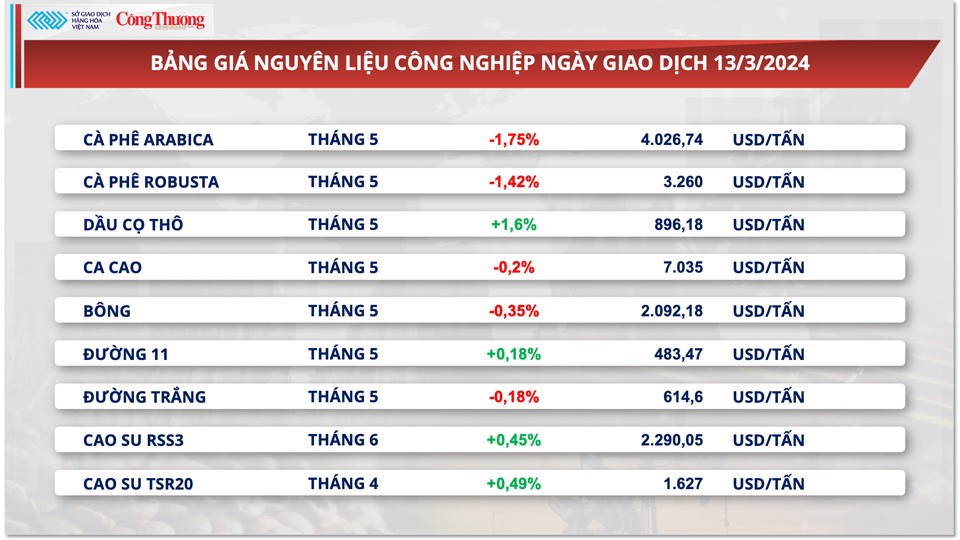 |
| Arabica and Robusta prices decreased by 1.75% and 1.42% respectively. |
Along with that, positive signals about the export situation in Brazil also contributed to strengthening the supply in the market. According to data from the Brazilian Coffee Exporters Association (CECAFE), the amount of Arabica exported in February from this country increased by 36.5% compared to February 2023, to 2.81 million bags.
For Robusta, the continuous improvement in inventories on the ICE-EU Exchange in the last 4 sessions is a factor weighing on prices. At the end of the session on March 12, Robusta inventories on the ICE Exchange continued to be added by 760 tons, reaching 25,470 tons.
In the domestic market, it was recorded this morning (March 14) that the price of green coffee beans in the Central Highlands and the Southern provinces decreased by 500 VND/kg. Accordingly, domestic coffee is currently purchased at around 90,600 - 91,500 VND/kg.
Rising coffee inventories and positive export performance from the world's two leading exporters have helped cool the market after a long period of concerns about supply shortages. Brazil's coffee exports in February 2024 increased by 57.5% compared to the same period last year, reaching 3.38 million bags, according to the Brazilian Coffee Exporters Association (CECAFE).
Previously, the Colombian Coffee Federation said that Colombia's Arabica coffee exports in February 2024 were estimated at 1.05 million bags, 12.5% higher than in February 2023.
Expert Nguyen Quang Binh commented that the coffee prices at the two establishments have dropped quite sharply, the reason being that funds and speculators liquidated after the newly released US inflation data. Financial experts believe that there will be no change in interest rates at the Fed's meeting in late March 2024. The bank's interest rate cut will probably fall in the middle of the year.
In addition, recent rains in Brazil continue to be a factor that puts downward pressure on Arabica prices. Increased inventories on both exchanges are also the reason for the decline in coffee. However, Robusta coffee still faces concerns about short-term supply shortages.
In the long term, a recent Reuters survey found that respondents expect coffee prices to be under pressure in the coming months due to a more favorable supply outlook, with the global coffee supply-demand balance forecast to average a surplus of 3 million bags in the 2024/25 crop year, compared to a surplus of 0.6 million bags in the 2023/24 crop year.
According to analysts, the main factor affecting the coffee market in the coming time will be the change in climate patterns, from the current El Nino to La Nina, which could occur as early as the second half of this year.
El Nino is typically bad for coffee production because it often leads to dry weather in Robusta growing areas in Asia and warmer than normal weather in Brazil. A shift to La Nina could bring more favorable weather for coffee plants.
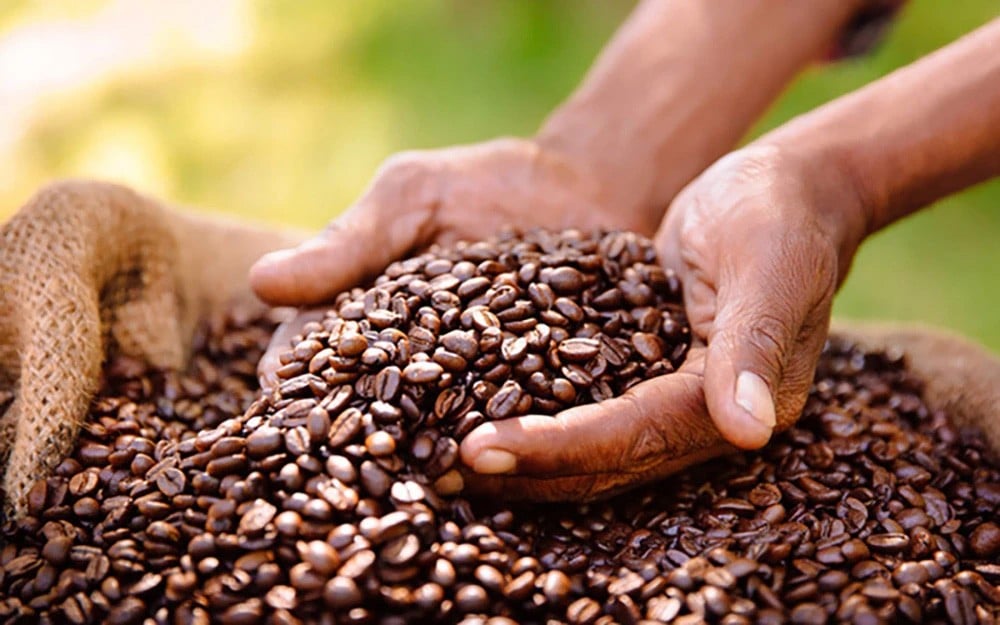 |
| Global coffee production in 2023-2024 is expected to increase by about 5.8% compared to the previous crop year to 178 million bags. |
The International Coffee Organization (ICO) forecasts global coffee production in the 2023-2024 crop year to increase by 5.8% compared to the previous crop year to 178 million bags, of which Arabica coffee output increases by 8.8% to 102.2 million bags and Robusta increases by 2.1% to 75.8 million bags. Consumption is expected to increase by 2.2% to 177 million bags, the world coffee market will have a surplus of 1 million bags in the 2023-2024 crop year.
In terms of proportion, green coffee accounted for 91% of total global coffee exports in January with 11.5 million bags, a sharp increase of 35.8% compared to the same period last year. This is also the largest export volume in January ever, surpassing the previous record of 10.4 million bags set in January 2019.
This result brings the total volume of green coffee beans exported in the first 4 months of the 2023-2024 crop year to 40.9 million bags, an increase of 14.2% over the same period last crop year.
Notably, Robusta green coffee exports hit a record 5.1 million bags in January, up 50.3% year-on-year. Vietnam, the world’s largest Robusta producer, contributed significantly to the increase, selling 3.8 million bags in January compared to 2.3 million bags in the same period last year.
According to data from the General Department of Customs, in the first two months of the year, coffee exports to most major consumption markets increased compared to the same period last year.
Of which, the European Union (EU) achieved the highest with 161,386 tons, worth 500.5 million USD, up 14.2% in volume and 66.3% in value over the same period last year, accounting for more than 40% of Vietnam's total coffee exports.
In the EU, some of Vietnam's leading coffee export markets are Germany with 50,665 tons (up 5.7%); Italy with 44,258 tons (up 24.2%); Spain with 28,101 tons (up 75.6%)...
Coffee exports to other major markets also increased: the US increased by 6.7%, Japan increased by 53.9%, Russia increased by 14.9%; especially, Indonesia increased by 215.6%; Philippines increased by 152.5%; China increased by 246.1%; Thailand increased by 6.8 times...
Source








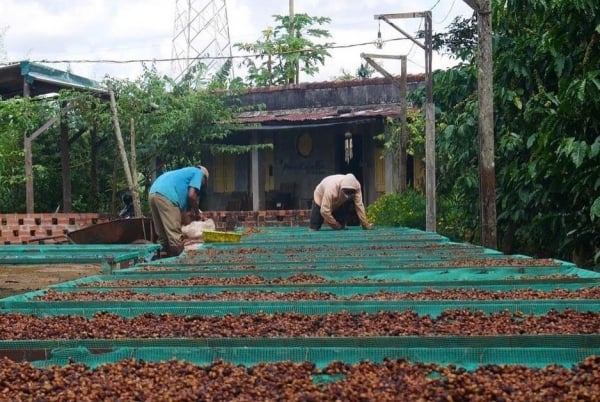
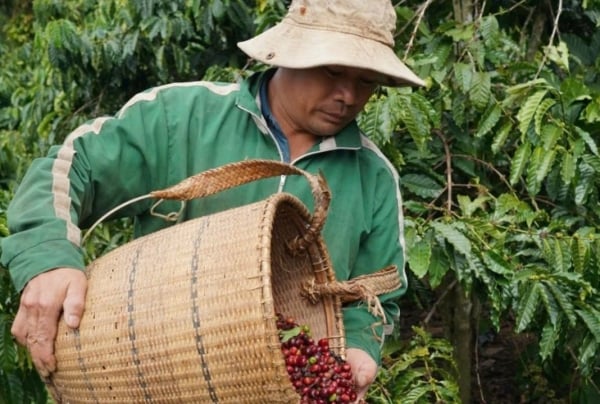

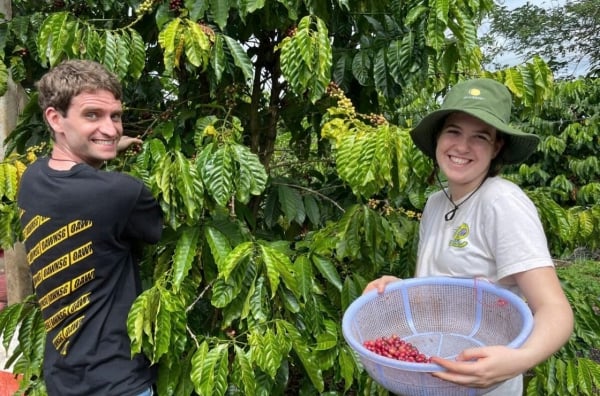
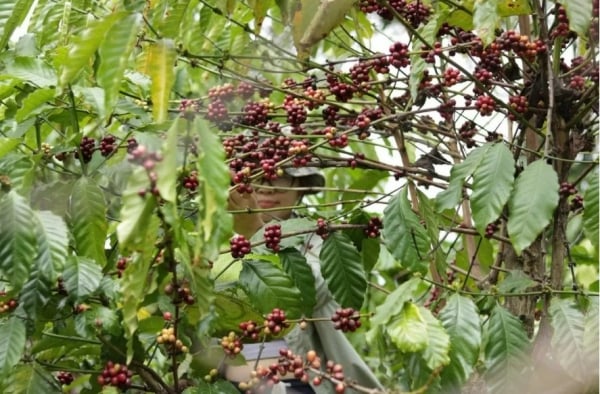
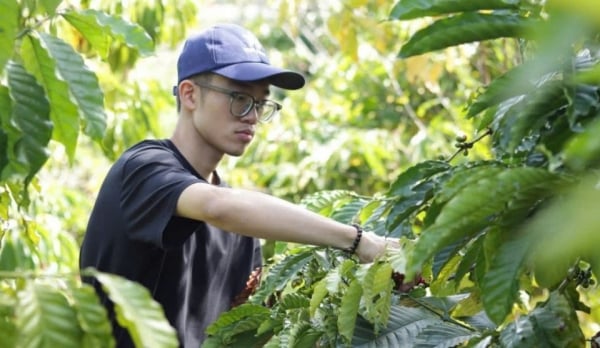

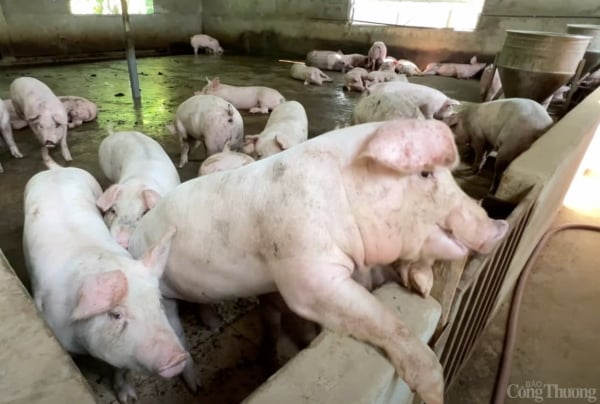
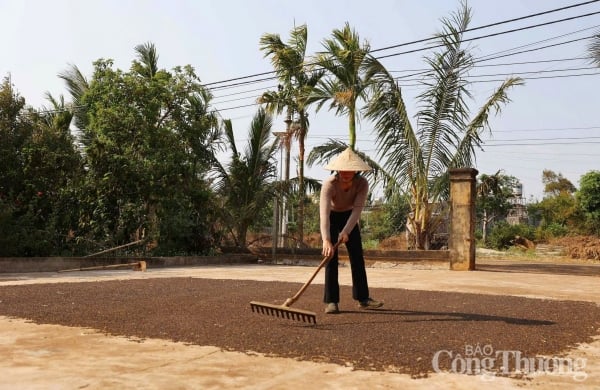







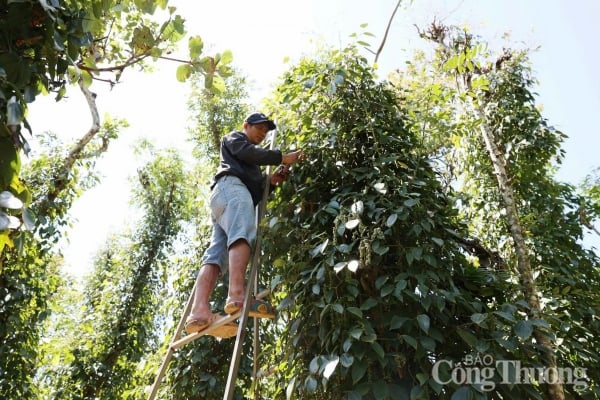

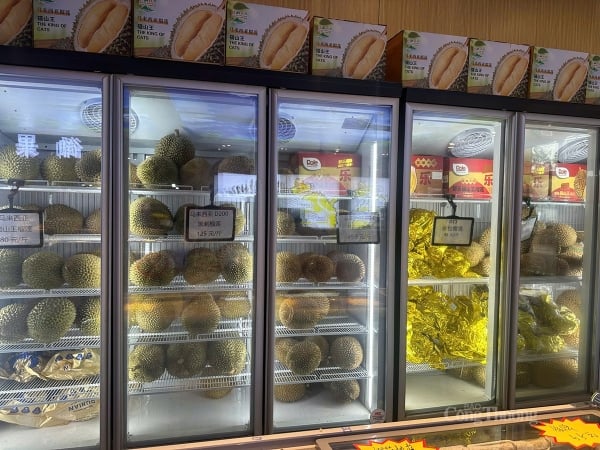








![[Photo] Prime Minister Pham Minh Chinh chairs Government Conference with localities on economic growth](https://vstatic.vietnam.vn/vietnam/resource/IMAGE/2025/2/21/f34583484f2643a2a2b72168a0d64baa)








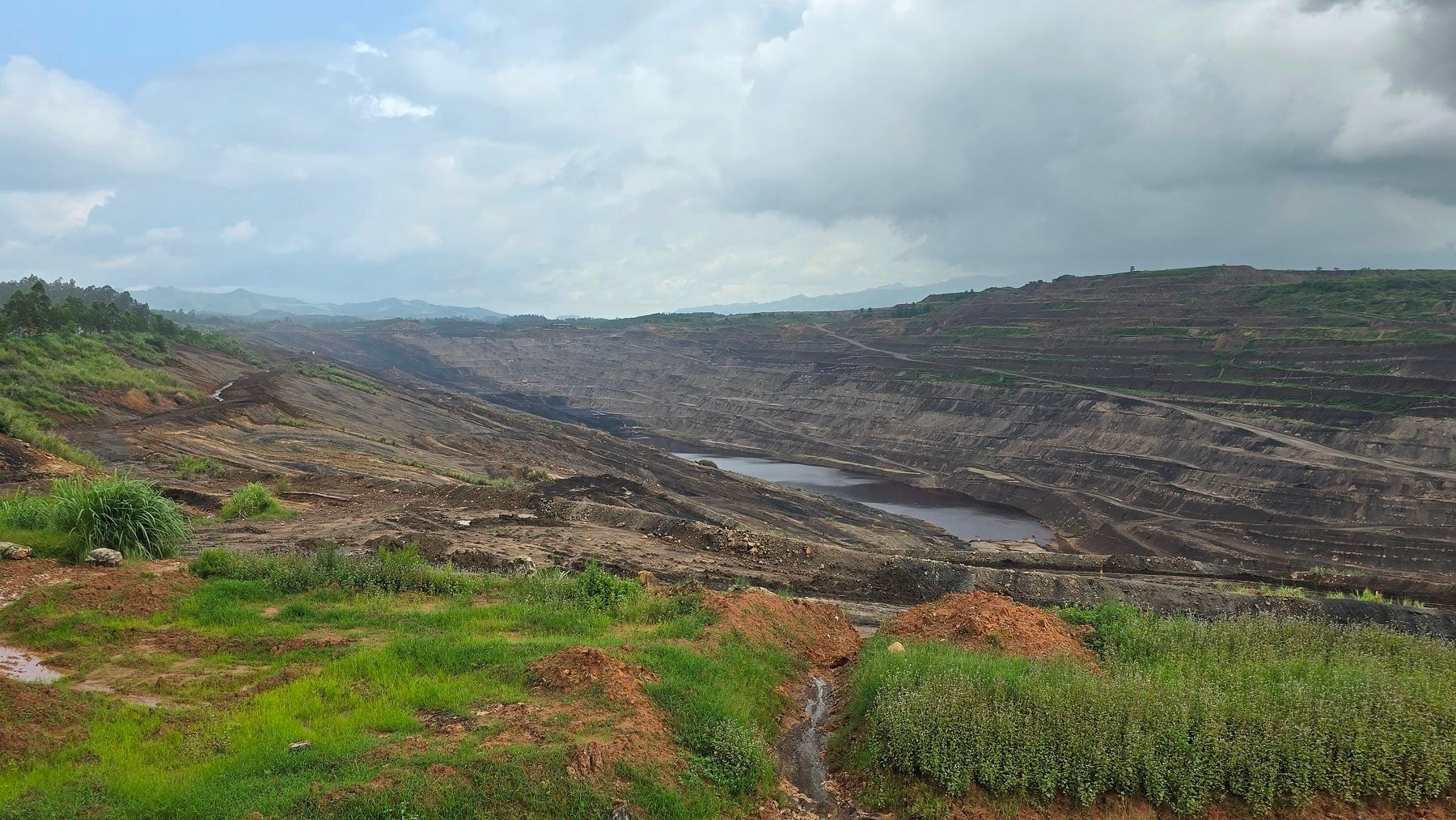



















































Comment (0)